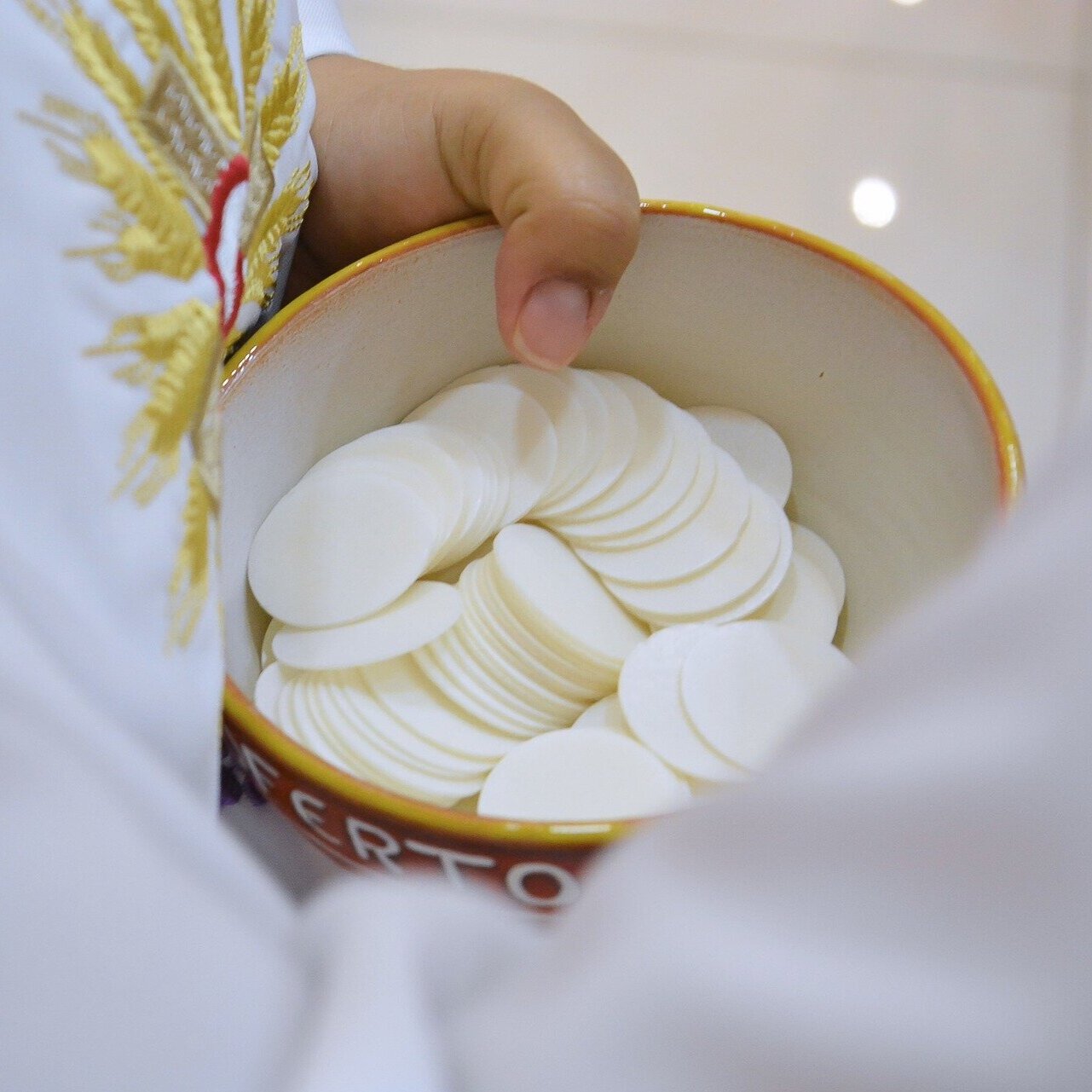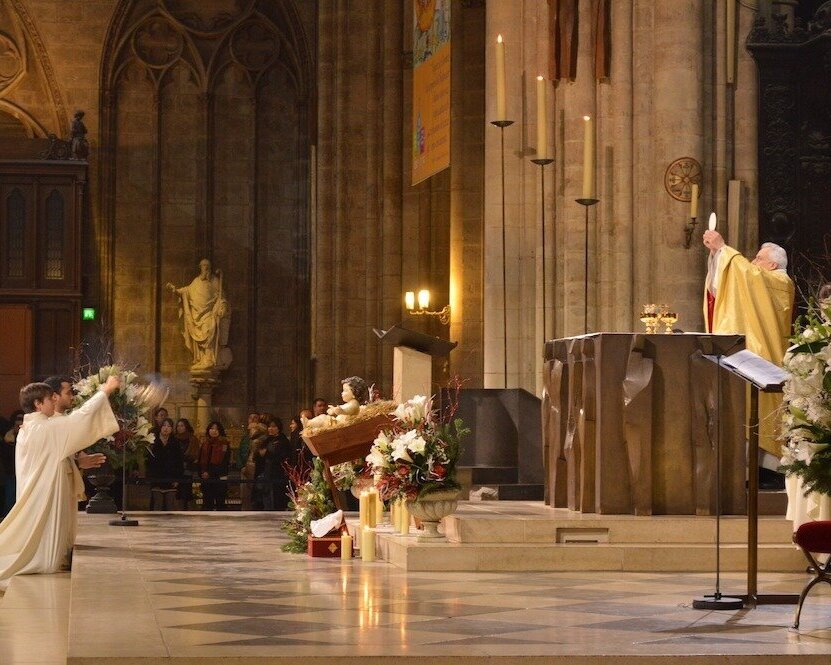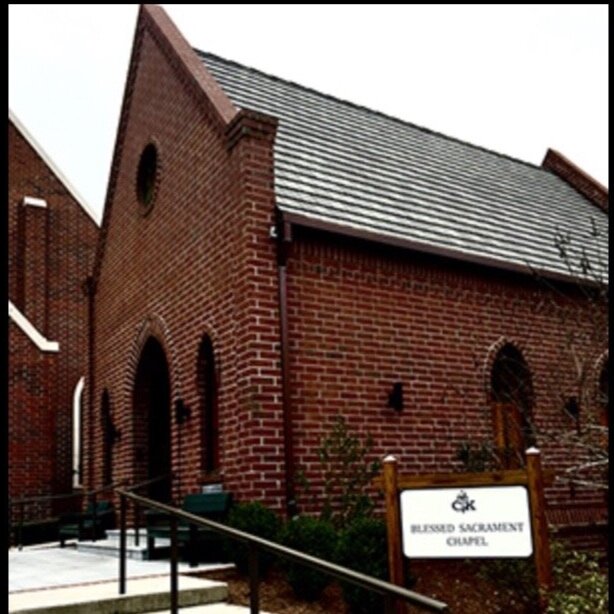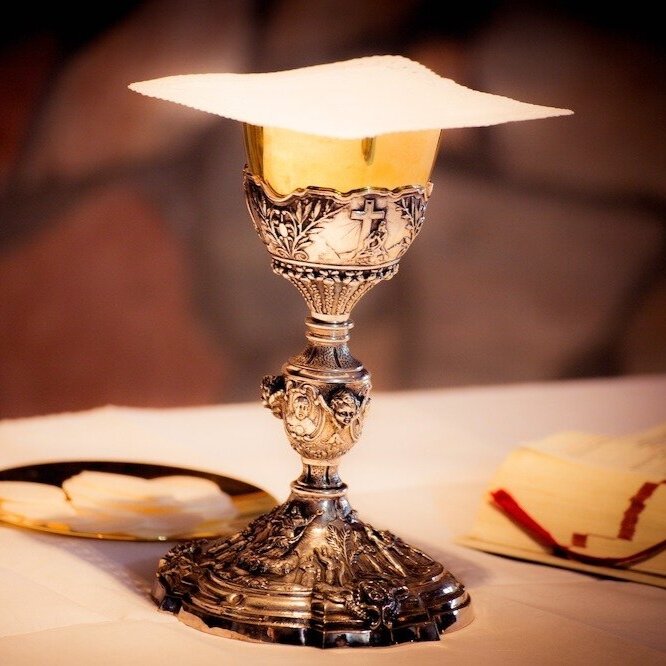The Eucharist, in the Mass and outside of the Mass, is the Body and Blood of Jesus Christ, and is therefore deserving of the worship that is given to the living God, and to Him alone.
-- Pope St. John Paul II
Opening Address in Ireland, Phoenix Park, September 29, 1979
Topics
Click on the image of the topic you wish to explore or just scroll down to view the entire page.
Adoration
In the Letter to the Ephesians, St. Paul tell us
"I pray ... that Christ may dwell in your hearts through faith, as you are being rooted and grounded in love. I pray that you may have the power to comprehend, with all the saints, what is the breadth and length and height and depth, and to know the love of Christ that surpasses knowledge, so that you may be filled with all the fullness of God."
[Eph 3:17-19, NRSVCE]
So how do we come to know Christ and all his vast love for us? Does it just appear in our hearts one day or do we have to search for it? For some it comes through the quiet moments of Eucharistic Adoration, during which in the real presence of Christ in the form of the Blessed Sacrament we can sit quietly and hear his voice. We can stay for five minutes or five hours. We can pray or simply meditate. Most importantly we need an open heart to hear his individual message to each of us.
When Jesus went to the garden of Gethsemane, he brought three disciples, Peter, James, and John, to keep him company while he prayed. Although, Christ implored them to keep awake and vigilant while he prayed, they could not stay awake. Jesus admonished Peter saying,
“So, could you not stay awake with me one hour? Stay awake and pray that you may not come into the time of trial; the spirit indeed is willing, but the flesh is weak.”
[Mt 26:40-41, NRSVCE]
Eucharistic Adoration, an ancient, prayerful devotion, is the coming in prayer before the Real Presence of God found in the exposed Blessed Sacrament. The Blessed Sacrament is exposed in a monstrance so that the Host is clearly visible to all who come to pray. Lit candles around the monstrance remind us that Jesus is the Light of the World. Unlike at the garden someone must be present and awake to guard Christ.
A Brief History
"This is indeed the will of my Father, that all who see the Son and believe in him may have eternal life; and I will raise them up on the last day."
Jn [6:40, NRSVCE]
The practice of adoration dates back to the beginning of Christianity, when monastic hermits would reserve the Eucharist for weekly self-communication over long periods of time. By praying in their individual cells in the presence of the Blessed Sacrament, they would be venerating the body, blood, soul and divinity of our Lord Jesus Christ, also known as participating in Eucharistic Adoration.
As monasticism became more communal, the reserved Eucharist was moved to a special vessel called a tabernacle that was placed in a separate room near the sanctuary available to the whole community. Eventually the tabernacle was moved to the main church and placed near the altar. Pope St. Gregory VII encouraged both religious and lay persons to engage in private adoration of Christ in the tabernacle. A red light is visible when consecrated hosts are in the tabernacle, indicating the Real Presence of Christ. Whenever we pray before and after mass or confession, we are considered in private adoration.
In 1262 Pope Urban IV instituted the Feast of Corpus Christi to honor the mystery of the perpetual presence of our Lord Jesus Christ’s Body, Blood, Soul, and Divinity in the Blessed Sacrament outside of the Mass. Eventually, a procession of the Blessed Sacrament in the monstrance became part of the feast such that a bishop or priest carries the monstrance and the laity and clergy follow him on a route through the parish streets returning to the church for a Benediction. These processions continue today, when we can literally walk with Jesus through our streets.
Early in the Middle Ages, forty hour prayer vigils began being celebrated during the Triduum. Forty hours signifies the amount of time that Jesus lay in the tomb before his resurrection. Eventually, the forty-hour devotion began to be celebrated throughout the year and included taking the Blessed Sacrament from the tabernacle and placing it in a monstrance on the altar for adoration. At the completion of the forty-hours, the Blessed Sacrament would be moved to another church and so on. St. John Neumann introduced the Forty-Hours Devotion to America in 1853. This devotion is considered the precursor to the organized Eucharistic Adoration we have today.
Another important aspect of Eucharistic Adoration is called the Holy Hour, in which an hour is spent in formal or informal worship in front of the Eucharist. In private revelations between 1673 and 1674, St. Margaret Mary Alacoque was told by Jesus that he desired her to spend one hour a week on Thursday nights at 11 o’clock and pray with him representing the lost hour in which the Apostles had slept. Since this was a private revelation, it did not gain influence in the church until much later when several Popes approved the revelation. Eventually, the practice spread and in 1886 Pope Leo XIII allowed Holy Hours to be practiced any day and hour of the week.
Many influential Catholics, including Archbishop Fulton Sheen, Pope St. John Paul II, and St. Teresa of Calcutta, practiced daily holy hours and considered this time to be a cornerstone of practicing their faith. In fact Archbishop Sheen wrote an entire book about his daily hour with Jesus called The Hour that Makes My Day. In this book he wrote about how transformative an hour spent with Jesus is:
"We become like that which we gaze upon. Looking into a sunset, the face takes on a golden glow. Looking at the Eucharistic Lord for an hour transforms the heart in a mysterious way as the face of Moses was transformed after his companionship with God on the mountain. Something happens to us similar to that which happened to the disciples at Emmaus. On Easter Sunday afternoon when the Lord met them, he asked why they were so gloomy. After spending some time in His presence, and hearing again the secret of spirituality - 'The Son of Man must suffer to enter into his Glory' - their time with Him ended and their 'hearts were on fire'.”
Pope St. John Paul II started Perpetual Eucharistic Adoration of the Most Blessed Sacrament in the Vatican in 1981, a couple of years after he became Pope. Known as the Pope of the Real Presence, he is attributed with the revival of Eucharistic Adoration, which he felt provides an inexhaustible source of holiness and grace. In his 2003 encyclical Ecclesia de Eucharistia, Pope St. John Paul II wrote of the importance of adoration to both the religious and laity:
“The worship of the Eucharist outside of the Mass is of inestimable value for the life of the Church. ... It is the responsibility of Pastors to encourage, also by their personal witness, the practice of Eucharistic adoration, and exposition of the Blessed Sacrament in particular, as well as prayer of adoration before Christ present under the Eucharistic species. … The Eucharist is a priceless treasure: by not only celebrating it but also by praying before it outside of Mass we are enabled to make contact with the very wellspring of grace. A Christian community desirous of contemplating the face of Christ in the spirit … cannot fail also to develop this aspect of Eucharistic worship, which prolongs and increases the fruits of our communion in the body and blood of the Lord.” [EE No. 25]
Eucharistic Species Vessels
During the celebration of Holy Mass, bread and wine are permanently converted into the Precious Body and Blood of our Lord Jesus Christ when the priest consecrates them [CCC 1375]. This change, called transubstantiation, means that the entire substance of the bread and wine is transformed into the Body and Blood of Christ, while the accidents alone (size, weight, color, flavor, etc.) remain. This transformation is a cornerstone of our Catholic faith as defined at the Council of Trent in 1551 [CCC 1376-1377].
Once the transubstantiation has occurred, Catholics believe they are truly in the Real Presence of Our Lord Jesus Christ – Body, Blood, Soul, and Divinity [CCC 1374]. At Holy Communion, we receive the Precious Body and Blood into our bodies, which unites us with Christ and the other members of the Church, His Mystical Body [CCC 1396] and imparts the forgiveness of our venial sins [CCC 1394, 1414].
We treat the Precious Body and Blood with the greatest respect and reverence, including using special vessels for their consecration and service during Mass and for the protection and storage of the consecrated Hosts (Body of Christ) between Masses. The Blood of Christ must be consumed completely during each Mass using specific ceremonial procedures, while unconsumed consecrated Hosts can be kept for future Masses, used for Eucharistic Adoration, or taken to the sick [CCC 1379].
The vessels used during the Sacrament of the Holy Eucharist, for Eucharistic Adoration, and to protect the Blessed Sacrament when stored are shown below. Click on the vessel name for more information about its use.
The Practice of Eucharistic Adoration
The practice and frequency of Eucharistic Adoration varies parish to parish specifically because followers must commit themselves to attend throughout the period of adoration. Hence, there are many kinds of Eucharistic Adoration:
Private adoration -- a prayerful visit to your church when the red light is on near the tabernacle indicating the presence of the Blessed Sacrament
Public adoration with the Blessed Sacrament exposed in the monstrance on the main altar of a chapel or church for a specified time. This usually includes a formal beginning and ending to the adoration.
Special holy day adoration or adoration for a special intention in the church.
Weekly or monthly adoration at your parish that occurs on a regularly scheduled day for set hours, usually from morning to evening. This generally concludes with a formal holy hour.
The traditional Forty Hours Adoration following the Good Friday service.
Perpetual adoration that continues for 24 hours a day, 7 days a week all year long in a designated adoration chapel. This requires the commitment of approximately 400 parishioners on a weekly basis if at least two are present and someone is a back-up in case of emergency. This is a great blessing to a committed parish community because it gives its faithful unlimited access to the Blessed Sacrament. A list of perpetual adoration chapels organized by state can be found here. This site is also a great resource for those considering starting an adoration chapel.
Jesus wished to remain physically with us until the end of time. At Mass, the gifts of bread and wine are consecrated on the altar by the words of Our Lord in the hands of the priest. The bread and wine cease to exist in essence, and in their place, Jesus gives us His body, blood, soul and divinity in the Eucharist. The Eucharist isn’t simply a symbol or sign of Christ. Jesus is truly present in the Eucharist under the appearance of bread and wine. Outside of Mass, we come to Adoration to be with Jesus in the Blessed Sacrament, to pray to Him, to listen to Him, to rest in Him, and to keep Him Company. Jesus tells us
"...store up treasures in heaven, … for where your treasure is, there also will your heart be." [Mt 6:20-21, NRSVCE]
Let him know that he is your treasure, by adoring him whenever possible. Here are a few prayers to help you with your visit to the Blessed Sacrament.
Keep seeking answers and keep sharing the faith!
To learn more, click on another topic:
The Great Monstrance
The Great Monstrance of the Cathedral of Toledo is more than twelve feet high and adorned with two hundred and sixty statuettes. As one of the largest in the world, its construction took more than 100 years. It is said to be made of the gold brought from the New World by Christopher Columbus.

























































